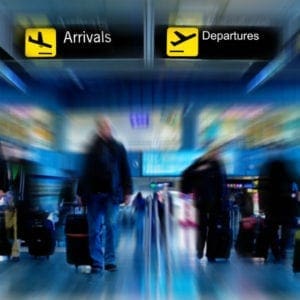 Rewards programs are everywhere nowadays; from the grocery store to the pet store and everything in between, anyone can sign up to receive perks offered by various vendors to members only. When it comes to travel rewards, there are a few main types: programs for airlines and for hotels, along with credit and payment cards that offer travel reward perks. But just what do Americans think about all of these options?
Rewards programs are everywhere nowadays; from the grocery store to the pet store and everything in between, anyone can sign up to receive perks offered by various vendors to members only. When it comes to travel rewards, there are a few main types: programs for airlines and for hotels, along with credit and payment cards that offer travel reward perks. But just what do Americans think about all of these options?
Nearly half (48%) of Americans have membership in at least one of these kinds of travel rewards program. Three in ten Americans are members of airline or hotel rewards programs (with 31% of Americans confirming membership in each), while a quarter have a credit or payment card with travel rewards (26%).
Membership in each increases significantly when looking at those who travel by commercial airline at least one time per year, with over half (56%) using an airline program, nearly half (47%) members in a hotel program, and over four in ten (42%) using a credit or payment card with travel rewards. With just over half of air travelers members of an airline rewards program, there’s certainly room for growth in the industry.
These are among the findings from a Harris Poll of 2,215 U.S. adults (aged 18 and older) surveyed online from April 16-20, 2015. Full results of this study, including data tables, can be found here.
Interestingly, older generations are more likely than their younger counterparts to be members of each of these types of programs:
- Membership in airline rewards program(s): 36% Matures, 36% Baby Boomers, 32% Generation X, & 24% Millennials
- Membership in hotel rewards program(s): 41%, 36%, 31%, & 23%, respectively
- Credit or payment card(s) with travel rewards: 38%, 30%, 21%, & 22%, respectively
But are they useful?
Whether or not someone personally takes advantage of the aforementioned programs, everyone has an opinion on them. Overall, equal percentages of Americans (46% each) view credit or payment cards with travel rewards and hotel rewards programs as very/somewhat useful, with slightly less saying the same for airline rewards programs (43%). Not too surprisingly, those who have each of these rewards programs are more likely to consider the programs very/somewhat useful:
- 70% of travel rewards credit/payment cardholders say these are useful
- 64% of hotel rewards members feel this way about these programs
- 59% of airline rewards members find these programs useful
However, on a more surprising note, Millennials are more likely than their older counterparts to find each of these programs to be very/somewhat useful, despite being the least likely to have membership in any of them. Millennials are most likely to find credit or payment cards with travel rewards (55% compared vs. 36% Gen Xers, 44% Baby Boomers, & 45% Matures), hotel rewards programs (54% vs. 42%, 44% & 39%) and airline rewards programs (53% vs. 36% Xers, 38% & 42%) useful.
And do they affect travel choices?
For travel rewards members, participation has at least some impact on a variety of travel decisions. Over six in ten (61%) say their memberships impact their decision on both selecting which hotel to stay at and which airline to fly on. Memberships affect decisions related to rental companies less so, but still, 40% say memberships impact which company they rent a car from.
These sentiments increase when looking at which type of program one participates in. Nearly three-quarters (73%) of those who have a membership in a hotel program say it impacts which hotel they choose and the same is true for those with an airline membership (75%) and which airline they choose.
Methodology
This Harris Poll was conducted online, in English, within the United States between April 16 and 20, 2015 among 2,215 adults (aged 18 and over). Figures for age, sex, race/ethnicity, education, region and household income were weighted where necessary to bring them into line with their actual proportions in the population. Propensity score weighting was also used to adjust for respondents’ propensity to be online.
All sample surveys and polls, whether or not they use probability sampling, are subject to multiple sources of error which are most often not possible to quantify or estimate, including sampling error, coverage error, error associated with nonresponse, error associated with question wording and response options, and post-survey weighting and adjustments. Therefore, The Harris Poll avoids the words “margin of error” as they are misleading. All that can be calculated are different possible sampling errors with different probabilities for pure, unweighted, random samples with 100% response rates. These are only theoretical because no published polls come close to this ideal.
Respondents for this survey were selected from among those who have agreed to participate in Harris Poll surveys. The data have been weighted to reflect the composition of the adult population. Because the sample is based on those who agreed to participate in our panel, no estimates of theoretical sampling error can be calculated.



















